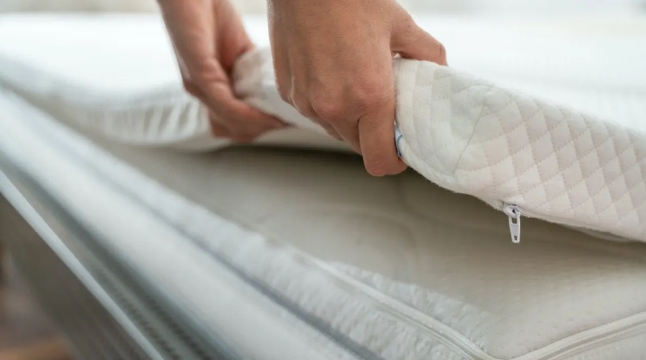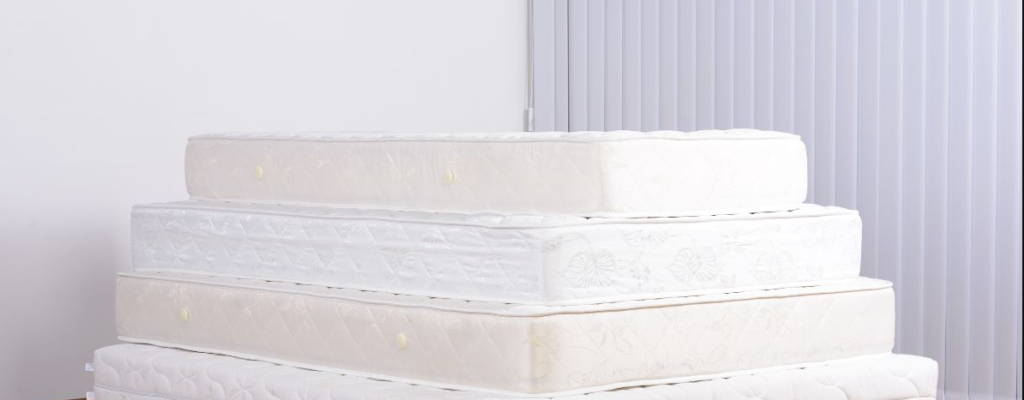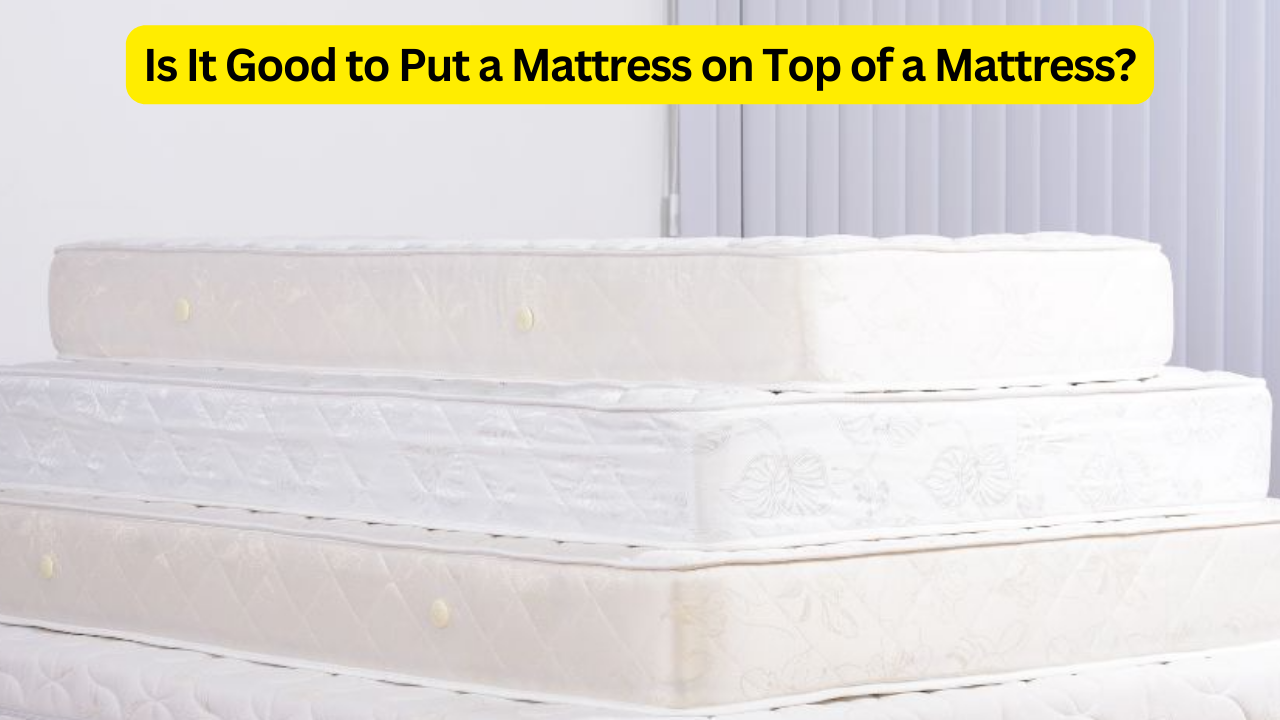Stacking mattresses is a practice that some people adopt for various reasons, but is it beneficial? Let’s delve into the details to understand the advantages, disadvantages, and best practices when considering putting a mattress on top of a mattress.
Is it good to put a mattress on top of a mattress? Putting a mattress on top of another mattress is generally not recommended because it can lead to uneven support and discomfort. The top mattress may sink into the bottom one, affecting your sleep quality and potentially causing back pain. For the best sleep experience, it’s better to use a proper bed frame or foundation designed to support a single mattress.
The Concept of Mattress Stacking
Mattress stacking involves placing one mattress directly on top of another to create a double-layer sleeping surface. This concept might seem odd at first glance, but it’s practiced more often than you might think. People consider this approach to improve comfort, enhance support, or simply solve a logistical problem like the lack of a proper bed frame.
Common Scenarios for Mattress Stacking

There are various reasons why someone might consider putting a mattress on top of another mattress. These can include:
- Enhanced Comfort: Adding a softer mattress on top can provide a more plush sleeping surface.
- Extra Support: A firmer mattress below can offer additional support to a softer, older mattress.
- Temporary Solutions: When moving or waiting for a new bed frame, stacking mattresses can be a quick fix.
- Cost-Effective: Instead of buying a new mattress, using an existing one can be budget-friendly.
Advantages of Stacking Mattresses
Improved Comfort and Support
Combining two mattresses can potentially offer enhanced comfort and support. For instance, if the bottom mattress is too firm, placing a softer mattress on top can make the bed more comfortable. Conversely, a firmer mattress on the bottom can provide much-needed support to an overly soft top mattress, helping to maintain proper spinal alignment.
Cost-Effective Solution
If you already have an extra mattress and you’re looking for a quick fix to improve your sleeping conditions, stacking can be a cost-effective solution. It saves you from the immediate expense of purchasing a new mattress or a box spring.
Increased Height
For those who prefer a higher bed, stacking mattresses can achieve the desired height without the need for a tall bed frame. This can make getting in and out of bed easier, particularly for individuals with mobility issues.
Disadvantages and Potential Risks

Risk of Sagging and Reduced Longevity
Stacking mattresses might lead to uneven weight distribution, causing both mattresses to sag over time. This can reduce the overall lifespan of both mattresses and compromise the quality of sleep.
Ventilation Issues
Proper ventilation is crucial for a mattress to maintain its structure and hygiene. When two mattresses are stacked, the bottom one can trap heat and moisture, leading to potential issues like mold and mildew growth. This lack of breathability can also make the sleeping surface warmer, which might not be ideal for those who sleep hot.
Stability Concerns
Without a proper base, stacked mattresses can shift and slide, posing a safety risk. This instability can lead to discomfort during sleep and can even be dangerous if the mattresses slip significantly.
Best Practices for Stacking Mattresses
Using a Mattress Pad or Protector
To mitigate some of the risks associated with stacking mattresses, consider using a mattress pad or protector between the two layers. This can help with hygiene, add an extra layer of comfort, and prevent the mattresses from slipping.
Regular Rotation and Maintenance
Regularly rotating the mattresses can help distribute weight more evenly and prevent sagging. This practice can extend the life of both mattresses and maintain a more consistent sleeping surface.
Securing the Mattresses
Using non-slip pads or securing straps can help keep the mattresses in place. This adds stability and reduces the risk of slipping, ensuring a safer sleeping environment.
Evaluating Mattress Compatibility
Assessing Mattress Types
Before stacking mattresses, it’s essential to consider the types of mattresses involved. Not all mattress types are compatible with stacking. For example, memory foam mattresses might not provide adequate support when placed on top of each other, while a combination of a firmer innerspring mattress and a softer foam mattress could work better.
Checking Weight Limits
Ensure that the bottom mattress can support the additional weight of the top mattress and the sleeper(s). Exceeding the weight limit can lead to premature sagging and potential damage.
When Not to Stack Mattresses
Structural Integrity of Mattresses
If either mattress shows signs of significant wear and tear, such as deep indentations, broken springs, or damaged foam, stacking them might exacerbate these issues. It’s best to replace a compromised mattress rather than stacking it.
Health Concerns
Individuals with certain health conditions, such as back pain, arthritis, or respiratory issues, should be cautious about mattress stacking. The altered sleeping surface might not provide the necessary support and could aggravate these conditions.
Alternatives to Mattress Stacking
Investing in a Mattress Topper
A mattress topper can provide additional comfort without the complications of stacking two full mattresses. Toppers come in various materials, including memory foam, latex, and down, offering customizable comfort options.
Using a Box Spring or Foundation
A box spring or foundation provides stable support for a mattress, enhancing its performance and longevity. This option maintains proper ventilation and prevents issues like sagging and instability.
Adjustable Bed Frames
Investing in an adjustable bed frame can offer both comfort and support. These frames allow you to customize the height and angle of the sleeping surface, catering to individual preferences and health needs.
FAQs
Is it safe to put a mattress on top of another mattress?
Yes, it can be safe if done correctly. Ensure both mattresses are in good condition, compatible, and properly secured to avoid slipping and sagging.
Will stacking mattresses affect my sleep quality?
It can, both positively and negatively. The combined mattresses might offer improved comfort or support, but they can also cause issues like sagging reduced breathability, and instability.
Can I stack any type of mattress?
Not all mattresses are suitable for stacking. It’s best to combine a firmer mattress with a softer one. Avoid stacking two memory foam mattresses, as they might not offer adequate support.
How do I prevent mattresses from sliding when stacked?
Using non-slip pads or securing straps between the mattresses can help keep them in place. A mattress pad or protector can also add friction and reduce slipping.
What are the risks of stacking mattresses?
Potential risks include sagging, reduced mattress lifespan, poor ventilation leading to mold and mildew, and instability which can affect sleep quality and safety.
Are there better alternatives to stacking mattresses?
Yes, alternatives include using a mattress topper, investing in a box spring or foundation, or purchasing an adjustable bed frame for customizable comfort and support.
Conclusion
While putting a mattress on top of another mattress might seem like a convenient and cost-effective solution, it’s essential to weigh the pros and cons carefully. Understanding the potential benefits, risks, and best practices can help you make an informed decision. Whether you’re seeking extra comfort, support, or height, considering alternatives like mattress toppers or proper bed foundations might offer a better, more sustainable solution. Always prioritize your health and comfort to ensure a good night’s sleep.

10 thoughts on “Is It Good to Put a Mattress on Top of a Mattress?”